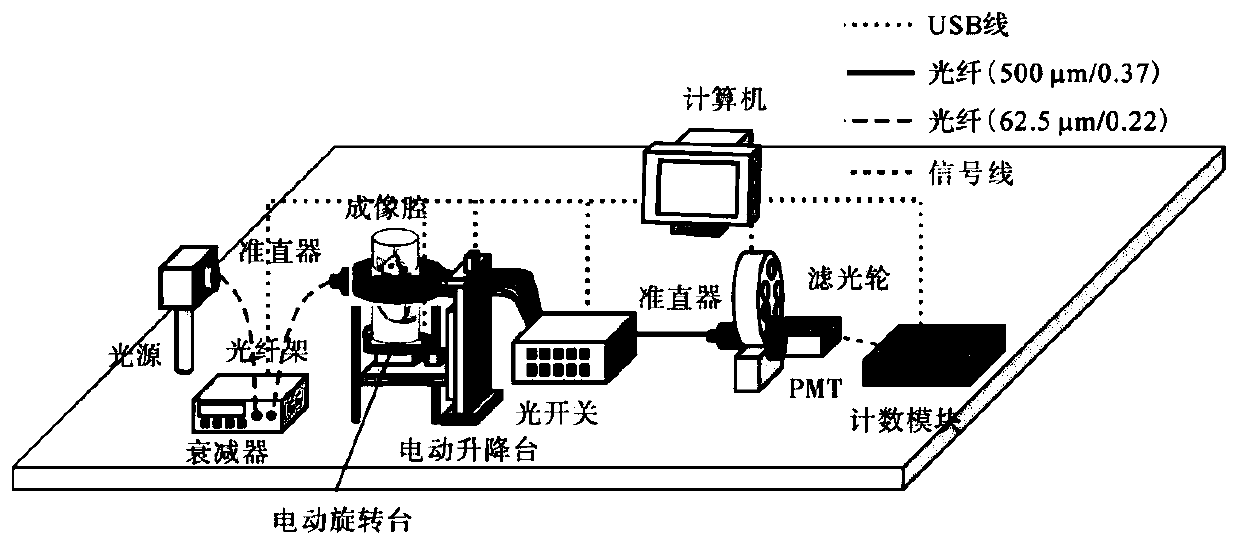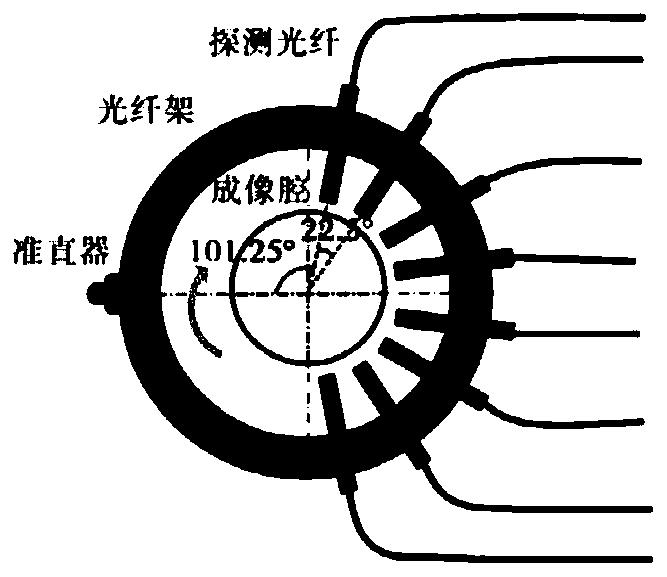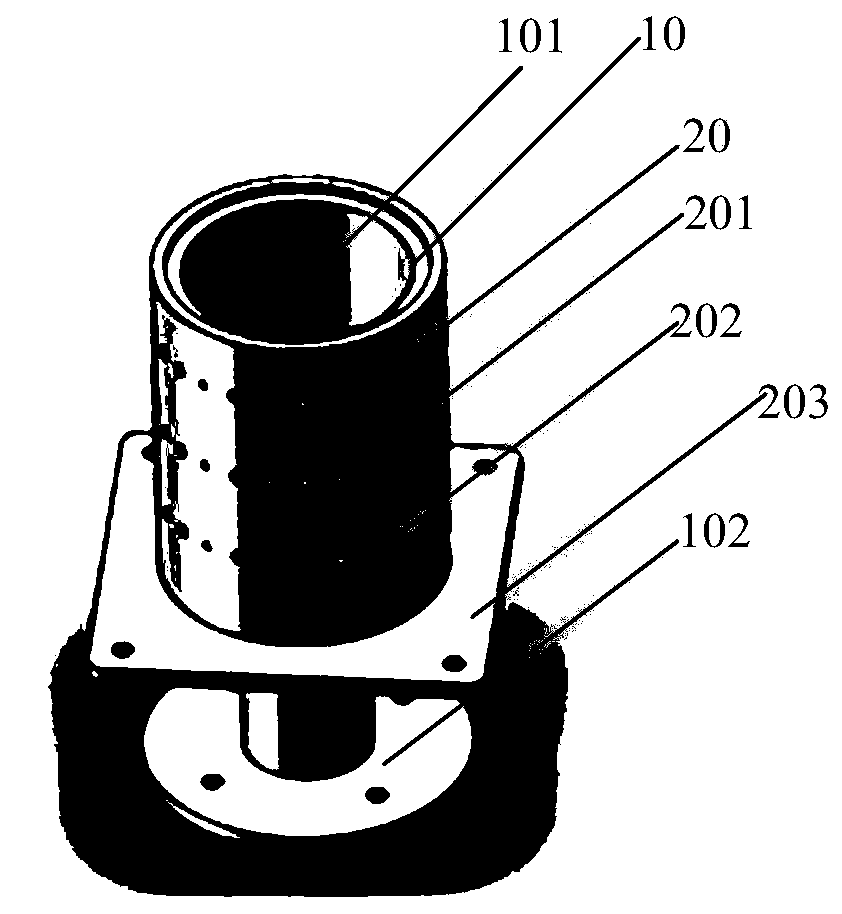Rotary diffusion optical imaging system
An optical imaging system, a rotary technology, used in medical science, diagnosis using tomography, sensors, etc., can solve the problems of strict light-proof conditions, complex system structure, and high price.
- Summary
- Abstract
- Description
- Claims
- Application Information
AI Technical Summary
Problems solved by technology
Method used
Image
Examples
Embodiment 1
[0060] See image 3 , image 3 It is a schematic diagram of a rotary diffuse optical imaging system provided by an embodiment of the present invention. This embodiment provides a rotary diffuse optical imaging system, the rotary diffuse optical imaging system includes a light source unit, a detection unit, a carrying device 10 with an imaging cavity 101, a rotatable sleeve device 20 and a data acquisition unit, the light source unit It includes a number of luminous light sources, the detection unit includes a number of detectors, the sleeve device 20 includes a sleeve 201, and the sleeve 201 is provided with N rows*M columns of through holes 202, and each through hole 202 in the mth column is correspondingly provided with a A light source, a detector is correspondingly arranged in each of the other through holes 202 except the mth column, and the sleeve 201 is set with the imaging cavity 101, 1≤m≤M, wherein the light source unit is used to inject The measured object provides...
PUM
 Login to View More
Login to View More Abstract
Description
Claims
Application Information
 Login to View More
Login to View More - R&D
- Intellectual Property
- Life Sciences
- Materials
- Tech Scout
- Unparalleled Data Quality
- Higher Quality Content
- 60% Fewer Hallucinations
Browse by: Latest US Patents, China's latest patents, Technical Efficacy Thesaurus, Application Domain, Technology Topic, Popular Technical Reports.
© 2025 PatSnap. All rights reserved.Legal|Privacy policy|Modern Slavery Act Transparency Statement|Sitemap|About US| Contact US: help@patsnap.com



